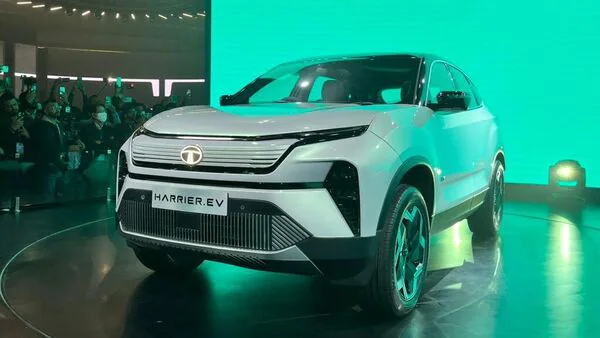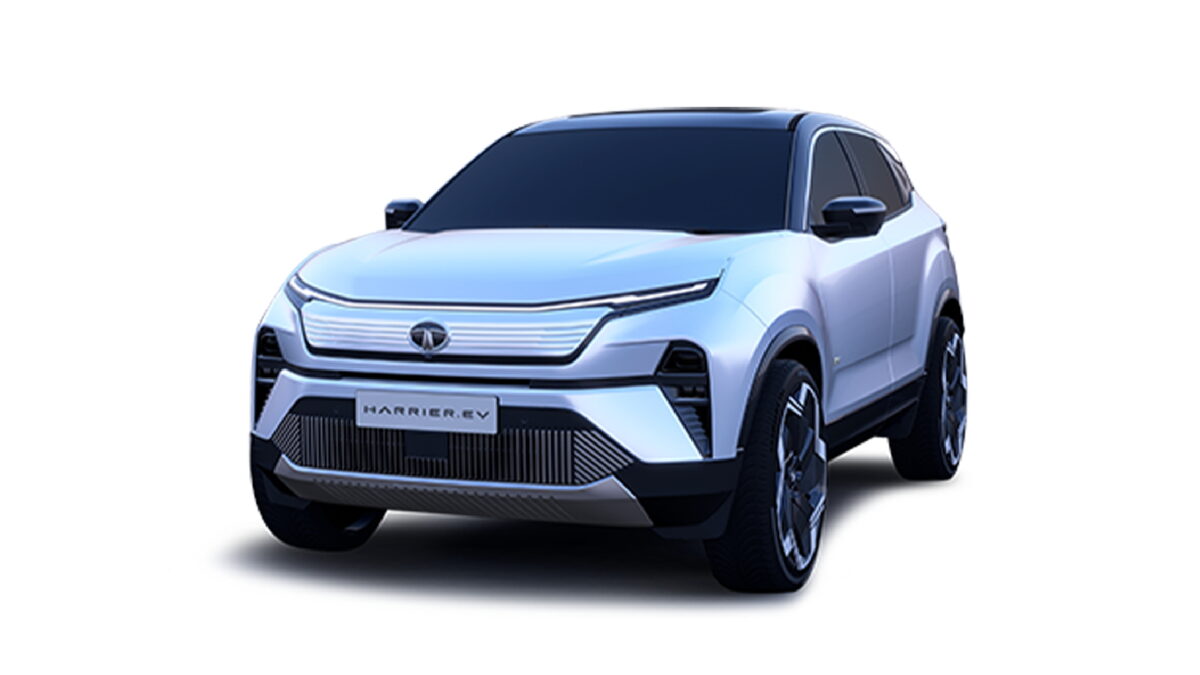Tata Motors is all set to take the electric vehicle (EV) market by storm with the long-awaited launch of Tata Harrier.ev on June 3, 2025. As Tata’s largest and most expensive EV ever, the Harrier EV is all set to be a game-changer, featuring innovative technology, powerful design, and Tata’s first-ever 4WD system for its next-gen EVs. Having made its debut at the 2025 Auto Expo and later its production avatar at the Bharat Mobility Global Expo, the Harrier EV is all set to transform electric mobility in the country.
Design & Exterior Highlights
The Harrier EV is indeed an imitation of its ICE counterpart, carrying forward its aggressive and muscular nature. The front features a shut-off top grille, which is joined by vertically stacked LED headlights beneath thin DRLs running the width of the car with a dramatic light bar. Its side is characterized by puffy wheel arches and a floating roof arrangement achieved through a blackout D-pillar. The rear is equally authoritative, featuring a light bar incorporated into it and vertically stacked indicators on the bumper.

One of its design highlights is its Curvv EV-inspired chrome-trimmed air dam, which neatly accommodates the radar sensor, pointing towards enhanced ADAS features. The wheels, ‘serrated turbine blade wheels,’ are expected to be provided in 17 to 19-inch sizes, adding to its road dynamics. What’s curious is that the Harrier EV can be recognized by a ‘.EV’ badge on the front doors and ‘HARRIER.EV’ lettering on the boot.
Interior & Technology
Getting inside, the Harrier EV borrows quite a lot from the Harrier facelift, including a two-tone dashboard, touch-sensitive aircon controls, and a floating touchscreen infotainment panel. The EV also gets a digital instrument panel, four-spoke steering wheel, and rotary dial for terrain modes. Technology and luxury come together with goodies like a panoramic sunroof, electronic parking brake activator, and new terrain modes.
Tata is providing connected car features and over-the-air (OTA) updates for the Harrier EV, keeping it updated with the latest software releases. Among the showstoppers is the ‘Summon’ self-parking feature, perhaps exclusive to the top variant, which allows the SUV to park by itself.
Platform & Powertrain
Under its beefy skin, the Harrier EV is underpinned by Tata’s Acti.ev (Gen 2) platform – a highly customized variant of its Omega platform. In contrast to its fuel-burning equivalent, the platform of the Harrier EV has been redesigned for electric power, with a redone floor to house a bigger battery and a new electrical layout.
The Harrier EV brings 4WD capability to Tata’s electric portfolio, thanks to a dual-motor setup with one motor per axle. While Tata has not officially revealed exact battery details, it will likely be more than the 55kWh pack in the Curvv EV. Tata’s C75 test cycle predicts more than 500 km in real-world range, which makes it very competitive in its segment.
Expected Pricing & Competition
The Tata Harrier EV will reportedly cost between ₹24 lakh and ₹28 lakh. That places it between rivals like the Hyundai Creta EV, MG ZS EV, Kia Carens EV, and the soon-to-be-launched Maruti e-Vitara. It may even rival the likes of the BYD eMAX7 and set a new standard for electric SUVs in the country.
Conclusion: A Bold Leap Forward
The Tata Harrier EV is not just a new member of Tata’s electric lineup; it’s a bold leap into electrified performance with 4WD capability, leading-edge design, and next-generation tech. With its introduction planned for June 3, 2025, the Harrier EV promises to elevate Tata’s spot to new levels in the electric vehicle segment, offering Indian customers a powerful, sustainable, and technologically advanced SUV.
The countdown is on—will the Harrier EV set new benchmarks for electric SUVs in India? Only time will tell, but Tata Motors does seem to have all the ingredients to do so.

